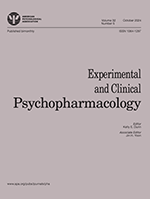 “The endocannabinoid system has been found to be pervasive in mammalian species. It has also been described in invertebrate species as primitive as the Hydra. Insects, apparently, are devoid of this, otherwise, ubiquitous system that provides homeostatic balance to the nervous and immune systems, as well as many other organ systems.
“The endocannabinoid system has been found to be pervasive in mammalian species. It has also been described in invertebrate species as primitive as the Hydra. Insects, apparently, are devoid of this, otherwise, ubiquitous system that provides homeostatic balance to the nervous and immune systems, as well as many other organ systems.
The endocannabinoid system (ECS) has been defined to consist of three parts, which include (1) endogenous ligands, (2) G-protein coupled receptors (GPCRs), and (3) enzymes to degrade and recycle the ligands. Two endogenous molecules have been identified as ligands in the ECS to date.
The endocannabinoids are anandamide (arachidonoyl ethanolamide) and 2-AG (2-arachidonoyl glycerol). Two G-coupled protein receptors (GPCR) have been described as part of this system, with other putative GPC being considered.
Coincidentally, the phytochemicals produced in large quantities by the Cannabis sativa L plant, and in lesser amounts by other plants, can interact with this system as ligands. These plant-based cannabinoids are termed phytocannabinoids.
The precise determination of the distribution of cannabinoid receptors in animal species is an ongoing project, with the canine cannabinoid receptor distribution currently receiving the most interest in non-human animals.”

 “The endocannabinoid system (ECS) is a multifunctional homeostatic system involved in many physiological and pathological conditions. The ligands of the ECS are the endocannabinoids, whose actions are mimicked by exogenous cannabinoids, such as phytocannabinoids and synthetic cannabinoids. Responses to the ligands of the ECS are mediated by numerous receptors like the classical cannabinoid receptors (CB1 and CB2) as well as ECS-related receptors, e.g., G protein-coupled receptors 18 and 55 (GPR18 and GPR55), transient receptor potential ion channels, and nuclear peroxisome proliferator-activated receptors. The ECS regulates almost all levels of female reproduction, starting with oocyte production through to parturition. Dysregulation of the ECS is associated with the development of gynecological disorders from fertility disorders to cancer. Cannabinoids that act at the ECS as specific agonists or antagonists may potentially influence dysregulation and, therefore, represent new therapeutic options for the therapy of gynecological disorders.”
“The endocannabinoid system (ECS) is a multifunctional homeostatic system involved in many physiological and pathological conditions. The ligands of the ECS are the endocannabinoids, whose actions are mimicked by exogenous cannabinoids, such as phytocannabinoids and synthetic cannabinoids. Responses to the ligands of the ECS are mediated by numerous receptors like the classical cannabinoid receptors (CB1 and CB2) as well as ECS-related receptors, e.g., G protein-coupled receptors 18 and 55 (GPR18 and GPR55), transient receptor potential ion channels, and nuclear peroxisome proliferator-activated receptors. The ECS regulates almost all levels of female reproduction, starting with oocyte production through to parturition. Dysregulation of the ECS is associated with the development of gynecological disorders from fertility disorders to cancer. Cannabinoids that act at the ECS as specific agonists or antagonists may potentially influence dysregulation and, therefore, represent new therapeutic options for the therapy of gynecological disorders.” “Ovarian cancer, with over a 90% reoccurrence within 18 months of treatment, and approximately a 30% mortality rate after 5 years, is the leading cause of death in cases of gynaecological malignancies. Acquired resistance, and toxic side effects by clinically used agents are major challenges associated with current treatments, indicating the need for new approaches in ovarian cancer treatment.
“Ovarian cancer, with over a 90% reoccurrence within 18 months of treatment, and approximately a 30% mortality rate after 5 years, is the leading cause of death in cases of gynaecological malignancies. Acquired resistance, and toxic side effects by clinically used agents are major challenges associated with current treatments, indicating the need for new approaches in ovarian cancer treatment. “Mood disorders are the most prevalent mental conditions encountered in psychiatric practice. Numerous patients suffering from mood disorders present with treatment-resistant forms of depression, co-morbid anxiety, other psychiatric disorders and bipolar disorders.
“Mood disorders are the most prevalent mental conditions encountered in psychiatric practice. Numerous patients suffering from mood disorders present with treatment-resistant forms of depression, co-morbid anxiety, other psychiatric disorders and bipolar disorders.


 “Chronic allograft dysfunction (CAD), defined as the replacement of functional renal tissue by extracellular matrix proteins, remains the first cause of graft loss.
“Chronic allograft dysfunction (CAD), defined as the replacement of functional renal tissue by extracellular matrix proteins, remains the first cause of graft loss. “Hepatic cardiomyopathy, a special type of heart failure develops in up to 50% of patients with cirrhosis and is a major determinant of survival. However, there is no reliable model of hepatic cardiomyopathy in mice. Herein we aimed to characterize the detailed hemodynamics of mice with bile-duct ligation (BDL)-induced liver fibrosis, by monitoring echocardiography and intracardiac pressure-volume (PV) relationships and myocardial structural alterations. Treatment of mice with a selective
“Hepatic cardiomyopathy, a special type of heart failure develops in up to 50% of patients with cirrhosis and is a major determinant of survival. However, there is no reliable model of hepatic cardiomyopathy in mice. Herein we aimed to characterize the detailed hemodynamics of mice with bile-duct ligation (BDL)-induced liver fibrosis, by monitoring echocardiography and intracardiac pressure-volume (PV) relationships and myocardial structural alterations. Treatment of mice with a selective  “Much of the initial reports for
“Much of the initial reports for 